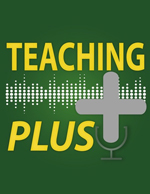Mid-course Feedback
Good teachers are made not born.
Becoming a good teacher doesn't happen overnight. As others have said, teachers are made, not born. Good instructors rely on multiple resources to inform how to best develop our teaching ability: colleagues' observations of our teaching, the SoTL literature, and reflecting on our own experiences. Another critical lens that informs our teaching praxis is that of our students: instructors typically rely heavily on students' ratings of instruction (USRI) to provide feedback on how to improve on their course design and instructional delivery. However, collecting student feedback at the end of a course provides no opportunity to address students' concerns for that particular instance of the course.
MCF: Why do it?
Mid-course feedback (MCF) is a valuable way to anonymously solicit students' perceptions of what they are experiencing in a course and allows instructors to respond to those experiences. MCF provides instructors with a chance to respond to students before the USRIs and often allows us to clarify where there may have been a miscommunication between instructors and students and defuse student resistance to learning. This may involve retooling how course content is being delivered, or how student engagement is being managed. It may also provide an opportunity to explain to students why the course is being run in a particular manner. Research has shown that collecting and responding to mid-course feedback can improve end-of-semester course evaluations (e.g. McDonnell & Dodd, 2017).
MCF: What does it look like in action?
Below are a couple of examples of how to solicit mid-course feedback.
- Download the Critical Incident Questionnaire that we have adapted from Stephen Brookfield. These questions may be used in a Google Form or imported into eClass as a feedback template. The eClass feedback template is an XML file that may be uploaded as a template when inserting a feedback activity into eClass. Please contact the IST eClass Support Team if you need assistance doing this.
- CTL has also prepared a Word document that contains selected questions revised from UBC's mid-course feedback website. These questions may be used in a Google Form or imported into eClass as a feedback template. The eClass feedback template is an XML file that may also be uploaded as a template when inserting a feedback activity into eClass. Again, please contact the IST eClass Support Team if you need assistance.
- A low-tech way of soliciting MCF is to have students create on paper three headings: stop, start and continue and then write down what the instructor should stop (what is hindering their learning), what to start (what would better support their learning) and what to continue (what is working for them). Providing examples such as talking too fast or using too many PowerPoints or assigning too many readings and then pass around an envelope in which students may place their anonymous responses. In small classes, students should be forewarned that handwriting can sometimes be recognized.
- The Classroom Feedback Form used in this study is provided in the Appendix: McDonnell, G.P., & Dodd, M.D. (2017). Should students have the power to change course structure? Teaching of Psychology, 44(2), 91-99. https://doi.org/10.1177/0098628317692604
Listen (podcasts)
 |
Using Student FeedbackSeptember 17, 2019 |